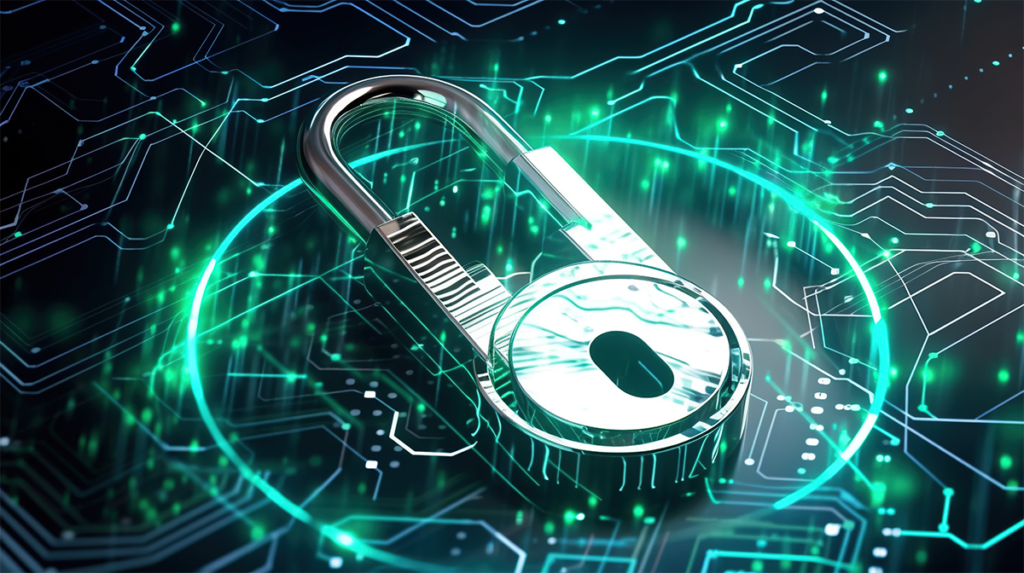Artificial Intelligence (AI) is revolutionizing the world of cybersecurity, adapting to the ever-changing landscape of threats that companies face today. The increasing adoption of AI has brought many opportunities to improve cybersecurity using automated detection and response to attacks, network efficiency, and vulnerability detection. Through AI’s advanced algorithms and machine learning capabilities, cybersecurity professionals can create more targeted and efficient solutions that are better equipped to prevent attacks and mitigate risks. This is crucial in today’s digital age, where cybercrime has become more sophisticated and more frequent, putting businesses and individuals at risk. AI’s potential to improve cybersecurity is groundbreaking and will continue to evolve as its use becomes more widespread.
Advantages Of AI In Cybersecurity
Artificial Intelligence has revolutionized the cybersecurity space, with many advantages that are beneficial to businesses and organizations. One of the significant benefits of AI in cybersecurity is that it is capable of detecting and pre-empting cyber threats before they can cause harm. By analyzing patterns of attack, AI systems can identify potential threats and provide timely warnings to cybersecurity experts. Additionally, AI-powered security systems can adapt to evolving threats, using machine learning to identify new risks and patterns of attack over time. This capability ensures that businesses and organizations are better prepared to address the ever-evolving cybersecurity threat landscape. Overall, the use of AI in cybersecurity enhances the effectiveness of security measures, providing a reliable and robust solution to protect businesses and organizations against cyber threats.
Network Traffic Monitoring
Network traffic monitoring is essential in ensuring the privacy and security of information exchanged between organizations and their customers. With the vast amount of data constantly flowing through an organization’s network, it can be difficult for IT security specialists to keep track of the traffic and identify potential threats. However, monitoring tools and techniques are available that can help identify and prevent unauthorized access to sensitive information. By effectively monitoring network traffic, organizations can enjoy peace of mind knowing that their data is secure.

AI Identifies Unknown Threats
Network traffic monitoring is essential in ensuring the privacy and security of information exchanged between organizations and their customers. With the vast amount of data constantly flowing through an organization’s network, it can be difficult for IT security specialists to keep track of the traffic and identify potential threats. However, monitoring tools and techniques are available that can help identify and prevent unauthorized access to sensitive information. By effectively monitoring network traffic, organizations can enjoy peace of mind knowing that their data is secure.
Vulnerability Management
Cybersecurity threats are a major concern for businesses today, and vulnerability management is an essential component of a comprehensive security strategy. A vulnerability assessment involves identifying and classifying vulnerabilities in your network, which may include software or hardware vulnerabilities, misconfigurations, or employee behavior. By regularly assessing and remediating vulnerabilities, organizations can reduce the risk of cyberattacks and protect sensitive data from theft or compromise. However, vulnerability management is not a one-time task, it requires ongoing attention and continuous improvements to keep up with the ever-evolving nature of cyber threats. Investing in a robust vulnerability management program may seem like a daunting task, but the benefits of improved security and risk reduction make it a worthwhile investment for any organization.
AI Learns More Over Time
Artificial Intelligence has taken the world by storm, and with good reason. This cutting-edge technology is constantly evolving, continuously improving network security as it learns more each day. As AI advances, it becomes more intelligent, identifying intricate patterns in the network and categorizing them into groups. Through continuous analysis, it detects security breaches and automatically responds to protect against further threats. This unprecedented level of sophistication and precision is a game-changer for cybersecurity, making AI an indispensable tool in an ever-changing digital landscape.

Duplicative Process Reduction
In today’s digital age, data breaches and cyber attacks have become commonplace. Cybercriminals are getting smarter and are always devising new ways to infiltrate companies’ networks and steal data. It’s no longer enough to rely solely on basic security measures. Unfortunately, these measures can become predictable, making it easier for attackers to exploit vulnerabilities. That’s why it’s imperative for companies to embrace the concept of duplicative process reduction, which helps to eliminate any unnecessary or redundant processes that might expose their networks to possible breaches. By doing so, companies can rest assured knowing that their data is safe and secure from the hands of cybercriminals.
Risk Prediction
Cybersecurity is a growing concern in today’s digital age, and the importance of securing IT assets cannot be overstated. Fortunately, AI systems can assist in inventorying both tangible and intangible assets, making it easier to identify and prioritize potential risks. With the help of AI, it is possible to predict the likelihood of a cyberattack and prepare accordingly, dedicating resources to the most vulnerable areas. Cybercriminals are constantly looking for opportunities to exploit these assets, making risk prediction a crucial part of any comprehensive cybersecurity strategy. By leveraging the power of AI, organizations can stay one step ahead of potential threats and keep their assets safe.

Securing Authentication
With the ever-increasing use of the internet, personal information has become more vulnerable than ever before. Websites that require personal information, such as usernames, passwords, and even ID photos, need to be extra cautious when it comes to securing authentication. With the rise of cybercrime, organizations must ensure that they implement an additional layer of security that protects the site’s back end. Hackers use various malicious techniques to gain access to personal information, which is why securing authentication has become the top priority for many commercial websites across the world. The need for a secure authentication process has never been more critical, and organizations must take the necessary measures to ensure that their customer’s information is safe from cyber threats.
Final Words
As cyber threats continue to evolve at a rapid pace, it has become increasingly challenging for human information security teams to stay on top of potential vulnerabilities. Thankfully, advancements in Artificial Intelligence technology are making it possible for cybersecurity professionals to do their jobs better. By leveraging the power of AI, these teams can now receive critical analysis and threat detection that was once impossible due to the sheer volume of data to sift through. As a result, risk of a breach is lowered and enterprise security posture is enhanced. While humans may struggle to keep up with the constantly shifting attack surfaces in today’s world, AI is proving to be a valuable ally in the fight against cybercrime.













Leave a Reply